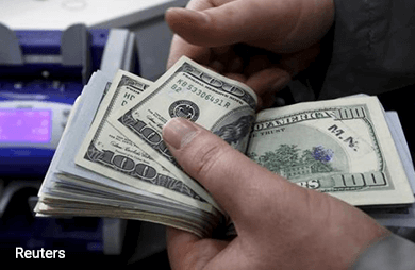
WASHINGTON (Sept 2): US private employers added fewer-than-expected workers in August, but the labor market momentum likely remains strong enough for the Federal Reserve to consider an interest rate hike this year.
The ADP National Employment Report on Wednesday showed private payrolls increased 190,000 last month. While that was below economists' expectations for a gain of 201,000 jobs, it was a step-up from the 177,000 positions created in July.
The report, which is jointly developed with Moody's Analytics, was published ahead of the government's more comprehensive employment report to be released on Friday.
According to a Reuters survey of economists, nonfarm payrolls likely increased by 220,000 jobs in August after rising 215,000 in July. There is, however, a risk of a weaker number as the first print of August payrolls has tended to be weaker in the last several years before being revised higher.
The unemployment rate is forecast to tick down to 5.2% from the 5.3% in July. The August employment report would be released less than two weeks before the Fed's Sept 16–17 policy meeting.
The chances of an interest rate hike this month have been diminished by a global stock market sell-off in the wake of poor economic data from China.
However, Fed Vice Chairman Stanley Fischer told CNBC last week it was too early to decide whether the stock market rout had made a rate hike this month less compelling.
Prices for US Treasury debt were trading lower, while the dollar was at session highs.
In a second report, the Labor Department said nonfarm productivity increased at its strongest pace in 1½ years in the second quarter, keeping wage inflation subdued for now.
The government revised productivity to show it rising at a 3.3% annual rate, the quickest since the fourth quarter of 2013, instead of the 1.3% pace reported last month.
Economists polled by Reuters had forecast productivity, which measures hourly output per worker, being revised up to a 2.8% annual growth pace. Productivity contracted at a 1.1% rate in the first quarter.
The government last week revised second-quarter gross domestic product to show GDP expanding at a 3.7% annual pace instead of the 2.3% rate it had initially estimated.
But the trend in productivity remains weak. Productivity rose 0.7% from a year ago instead of the 0.3% increase reported last month.
Growth in productivity is an important determinant of the economy's non-inflationary speed limit.
Though the second-quarter bounce back is dampening wage pressure for now, the weak trend in productivity suggests the economy's growth potential could be lower than the 1.5% to 2.0% pace that economists have been estimating.
That would imply the spare capacity in the economy is being squeezed out more quickly than thought and that inflation pressures may take hold a little bit faster than had been anticipated.
Unit labor costs, the price of labor per single unit of output, fell at a 1.4% rate in the second quarter, rather than increasing at a 0.5% rate as previously reported.
Unit labor costs rose 1.7% compared to the second quarter of 2014. They increased at a 2.6% rate in the first quarter.
Compensation per hour increased at a 1.8% rate in the second quarter, unchanged from last month's estimate. It was up 2.5% compared to the second quarter of 2014.